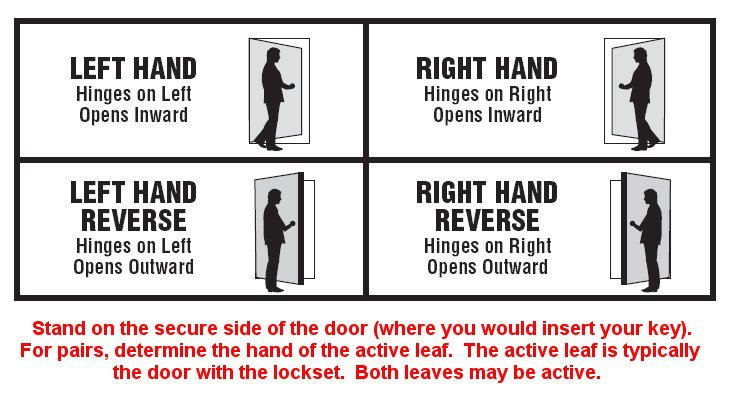
Here’s the thing: knowing how to determine door handing isn’t just for professionals. It’s for anyone looking to install a new door, swap out hardware, or even upgrade their security. With a little guidance, you can easily grasp this concept and avoid common pitfalls. So, let’s dive into the ins and outs of door handing and how to choose the right hardware seamlessly.
What is Door Handing?
Understanding door handing starts with the basics. Door handing refers to the direction in which a door swings open. Essentially, it defines whether a door is considered left-hand or right-hand. This might remind you of how we all have a dominant hand—most people find it easier to use one side over the other. Door handing is simply a way of categorizing doors based on their functionality.
To determine the handing, you’ll need to stand facing the door. If the hinges are on the left and the door swings toward you, it’s a left-hand door. Conversely, if the hinges are on the right and it swings toward you, it’s a right-hand door. This simple method lets you understand how to match the correct hardware for your door.
Why is Door Handing Important?
You might be wondering why door handing matters at all. After all, doesn’t a door just open? In reality, it affects everything from security to aesthetics. When you know the handing of a door, you can ensure proper hardware selection, which includes knobs, locks, and hinges.
If you mistakenly grab the wrong hardware for your door handing, it may not function correctly. This could mean a lock that doesn’t catch, a handle that’s uncomfortable to use, or a hinge that wears out faster due to improper alignment. By choosing the right hardware from the beginning, you save yourself time and potential costs down the road.
How to Determine Door Handing
Let’s break down the steps to determine door handing more clearly. Here’s a simple way to do it:
- Stand facing the door.
- Check which side has the hinges.
- If the hinges are on the left and the door swings towards you, it’s left-hand. If on the right, it’s right-hand.
- For double doors, you might consider the handing of the active door (the one that opens first).
This method works every time, no special tools needed! It’s just like checking if you’re left- or right-handed. Just remember: if you can push it open, it’s the opposite of the hinge side.
Common Mistakes When Choosing Door Hardware
Even with a clear understanding of door handing, it’s easy to make mistakes while selecting hardware. One common error is not double-checking the handing before purchasing your items. Many people go by memory or assumption, which can lead to buying the wrong locks or handles.
Another mistake involves not considering the door’s thickness. Hardware isn’t one-size-fits-all. A thick door may require different screws or fittings compared to a standard door. Plus, things like door sweeps or strike plates can vary, impacting your installation.
And let’s not forget about the aesthetic aspect. Hardware comes in many styles, and you’ll want to ensure that whatever you choose matches your door and decor. If it looks awkward or out of place, it can throw off the entire feel of a room.
Choosing the Right Hardware Based on Handing
Once you’ve determined the handing of your door, it’s time to shop for hardware. Whether you’re looking for locks, knobs, or handles, knowing the door’s handing helps narrow down your choices.
For example, if you have a left-hand door, you’ll want to search for left-handed locks or handles to ensure they fit properly. Many brands label their hardware specifically for left-hand or right-hand doors, so it’s easy to find what you need.
Additionally, take the time to explore different types of locks. Some doors might benefit from deadbolts for added security, while others may just need a sturdy knob. Think about how you’ll use the door and what features are important for your situation.
Universal vs. Brand-Specific Hardware
You might be considering whether to go for universal hardware or stick with a brand-specific option. Universal locks and handles can be a quick fix, but they may not offer the best fit for your specific door handing. They’re designed to be adaptable, but that can sometimes lead to a less-than-perfect installation.
On the other hand, brand-specific hardware is made to fit perfectly with the hinge and handing of your door. While they might cost a bit more, they often provide a better experience and longer-lasting results. Think of it like buying a tailored suit versus off-the-rack: one just fits better!
Now that you have a clear understanding of door handing, you can confidently select the right hardware for your doors. Remember, determining whether your door is left-hand or right-hand is as simple as checking the hinges. By avoiding common mistakes and considering the correct hardware, you’ll not only streamline the process but also improve the overall functionality and look of your doors.
So, next time you’re faced with a door, you’ll feel equipped to handle the hardware selection like a pro. Happy installing!